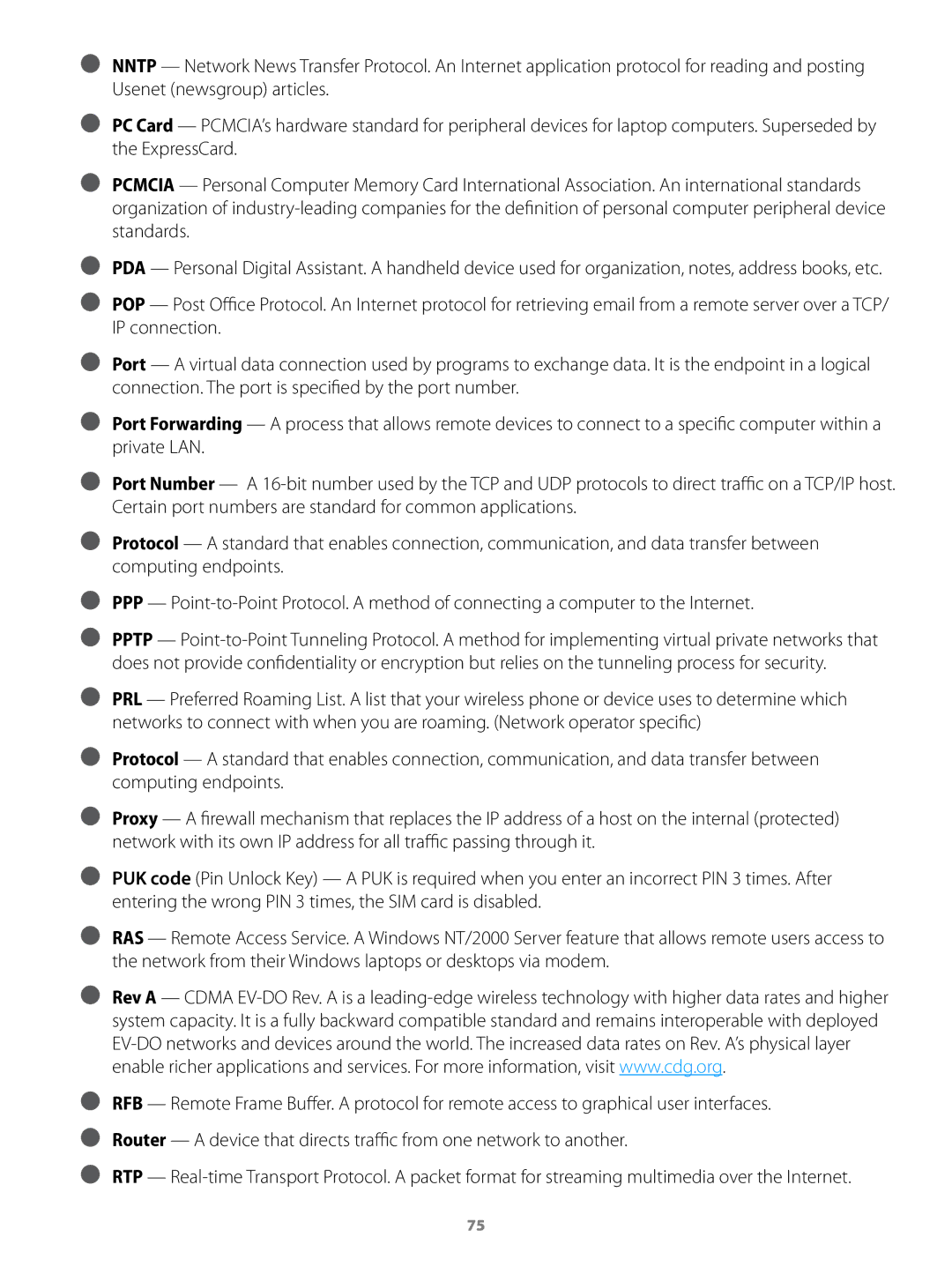●●NNTP — Network News Transfer Protocol. An Internet application protocol for reading and posting Usenet (newsgroup) articles.
●●PC Card — PCMCIA’s hardware standard for peripheral devices for laptop computers. Superseded by the ExpressCard.
●●PCMCIA — Personal Computer Memory Card International Association. An international standards organization of
●●PDA — Personal Digital Assistant. A handheld device used for organization, notes, address books, etc.
●●POP — Post Office Protocol. An Internet protocol for retrieving email from a remote server over a TCP/ IP connection.
●●Port — A virtual data connection used by programs to exchange data. It is the endpoint in a logical connection. The port is specified by the port number.
●●Port Forwarding — A process that allows remote devices to connect to a specific computer within a private LAN.
●●Port Number — A
●●Protocol — A standard that enables connection, communication, and data transfer between computing endpoints.
●●PPP —
●●PPTP —
●●PRL — Preferred Roaming List. A list that your wireless phone or device uses to determine which networks to connect with when you are roaming. (Network operator specific)
●●Protocol — A standard that enables connection, communication, and data transfer between computing endpoints.
●●Proxy — A firewall mechanism that replaces the IP address of a host on the internal (protected) network with its own IP address for all traffic passing through it.
●●PUK code (Pin Unlock Key) — A PUK is required when you enter an incorrect PIN 3 times. After entering the wrong PIN 3 times, the SIM card is disabled.
●●RAS — Remote Access Service. A Windows NT/2000 Server feature that allows remote users access to the network from their Windows laptops or desktops via modem.
●●Rev A
●●RFB — Remote Frame Buffer. A protocol for remote access to graphical user interfaces.
●●Router — A device that directs traffic from one network to another.
●●RTP —
75
